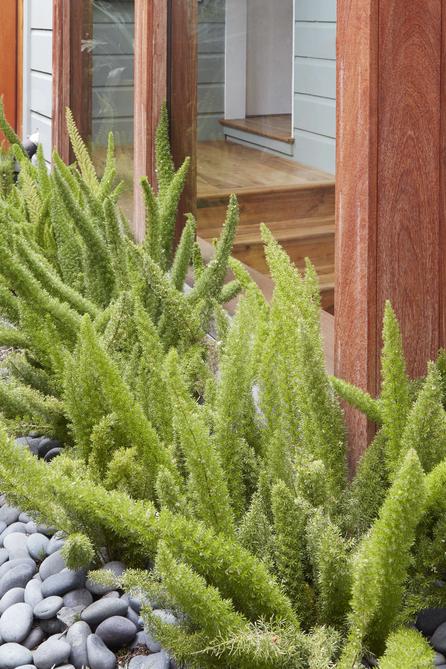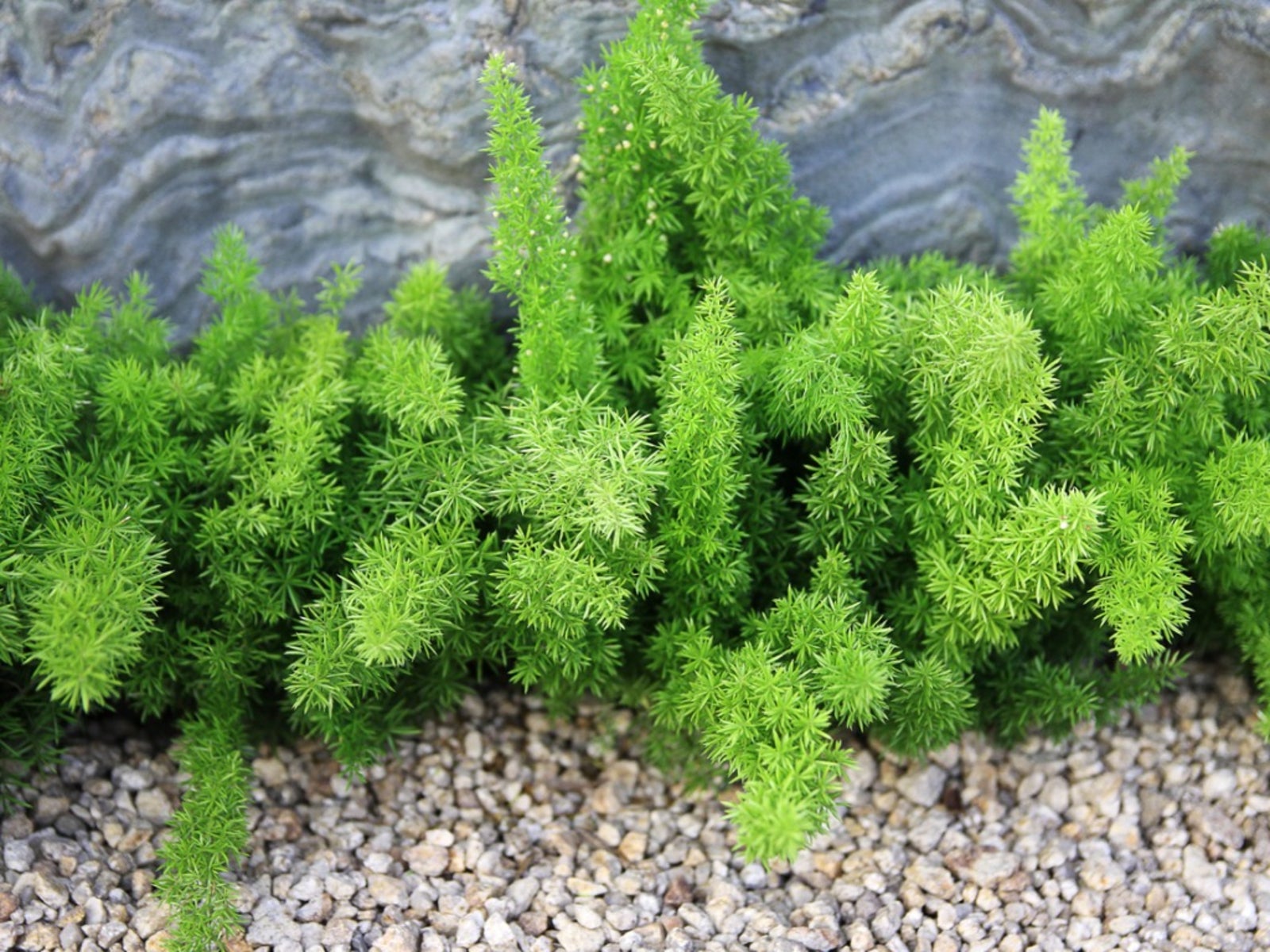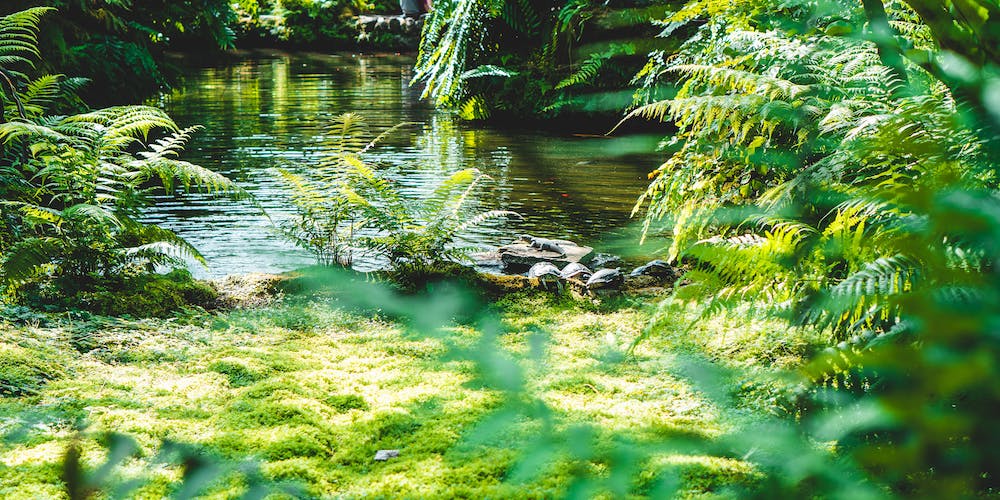Foxtail ferns are an elegant addition to any landscape, offering a unique texture and vibrant green color. With their long, feathery fronds, foxtail ferns add a touch of whimsy to any outdoor space. But these versatile plants can do more than just add visual interest – they can also be used in a variety of landscaping ideas to create a stunning and cohesive outdoor design. In this article, we will explore five creative foxtail fern landscaping ideas that will help you transform your outdoor space into a lush and inviting oasis.
1. Foxtail Fern Hedges: A Natural Privacy Screen

Foxtail ferns can be used to create a natural privacy screen, providing both visual and acoustic barriers. Planting foxtail ferns in a row along the perimeter of your property or around your patio can help block out noise and create a private space for you to relax and unwind. These ferns grow up to 3 feet tall and 2 feet wide, making them an ideal choice for hedges. Their dense foliage also makes them effective at screening out unwanted views from neighboring properties.
How to Use Foxtail Fern Hedges:
-Choose a location with well-draining soil and partial shade.
-Dig a trench that is 2-3 times wider and shallower than the root ball of your foxtail ferns.
-Place the ferns in the trench, spacing them about 2-3 feet apart.
-Fill the trench with soil, gently tamping it down around the roots.
-Water thoroughly and continue to water regularly until the plants are established.
Examples of Foxtail Fern Hedges:
-One homeowner used foxtail fern hedges to create a secluded seating area in their backyard. The ferns were planted around the perimeter of a small patio, providing privacy and a lush backdrop for the space.
-Another example is a commercial property that used foxtail fern hedges to create an inviting entrance. The hedge was planted along the sidewalk leading up to the building, providing a natural barrier and adding visual interest to the otherwise plain concrete walkway.
Comparison with Other Plant Types:
Compared to other popular hedge plants like boxwood or privet, foxtail ferns offer a more casual and whimsical look. Their feathery fronds add texture and movement to the landscape, creating a softer and more relaxed feel. They also require less maintenance and pruning than traditional hedge plants, making them a low-maintenance option for those who want to add some greenery to their outdoor spaces without the extra work.
Advice for Foxtail Fern Hedges:
When planting foxtail fern hedges, be sure to space them far enough apart to allow for proper growth and air circulation. This will prevent overcrowding and promote healthier, fuller growth. It’s also important to regularly water and fertilize your hedges to keep them looking vibrant and lush. Prune away any dead or damaged fronds to maintain the overall shape and appearance of the hedge.
2. Foxtail Fern Borders: Adding Structure and Color

Foxtail ferns are a great choice for creating borders in your landscape. Their upright growth habit and bright green color make them perfect for defining garden beds, pathways, and other areas of your outdoor space. Depending on the size and shape of your border, you can use foxtail ferns as a single row or multiple rows to create a thicker, more defined edge.
How to Use Foxtail Fern Borders:
-Choose a location with well-draining soil and partial shade.
-Dig a trench that is 1-2 times wider and deeper than the root ball of your foxtail ferns.
-Place the ferns in the trench, spacing them about 6-12 inches apart depending on the desired density of your border.
-Fill the trench with soil, gently tamping it down around the roots.
-Water thoroughly and continue to water regularly until the plants are established.
Examples of Foxtail Fern Borders:
-One homeowner incorporated foxtail fern borders in their vegetable garden, using them to define the edges of raised beds. The vibrant green color of the ferns provided a beautiful contrast to the various hues of vegetables and herbs growing in the garden.
-Another example is a commercial property that used foxtail fern borders to create a natural barrier between a parking lot and a walkway. The ferns not only added structure to the landscape, but also helped soften the harsh lines of the pavement.
Comparison with Other Plant Types:
While traditional border plants like boxwood or hydrangeas offer a more formal and structured look, foxtail ferns provide a more organic and flowing feel. Their long fronds can also help soften the edges of hardscaping elements, creating a more cohesive and natural look in your landscape design.
Advice for Foxtail Fern Borders:
When using foxtail ferns as borders, it’s important to consider the size and shape of your space. For smaller areas, a single row of ferns may be enough to define the border, while larger spaces may require multiple rows. Be sure to also take into account the height and spread of the ferns when spacing them out, so they don’t overwhelm the border or crowd out other plants.
3. Foxtail Fern Groundcover: A Unique Alternative

Instead of traditional groundcovers, consider using foxtail ferns to add visual interest and texture to your outdoor space. Their upright growth habit and dense foliage make them an excellent choice for covering large areas, and their low maintenance needs make them a practical option for those who want to minimize upkeep in their landscape.
How to Use Foxtail Fern Groundcover:
-Choose a location with well-draining soil and partial shade.
-Dig a hole that is slightly wider and deeper than the root ball of your foxtail ferns.
-Place the fern in the hole, making sure the top of the root ball is level with the ground.
-Fill the hole with soil, gently tamping it down around the roots.
-Water thoroughly and continue to water regularly until the plant is established.
Examples of Foxtail Fern Groundcover:
-One homeowner used foxtail ferns as a groundcover under a large tree in their backyard. The dense foliage of the ferns helped fill in the space and provided a lush green carpet that contrasted beautifully with the bark of the tree.
-Another example is a commercial property that incorporated foxtail fern groundcover in a courtyard area. The ferns were planted between stepping stones and added a sense of whimsy and charm to the space.
Comparison with Other Plant Types:
Compared to traditional groundcovers like ivy or creeping thyme, foxtail ferns offer a more unique and eye-catching look. Their feathery fronds add texture and movement to the landscape, creating a more dynamic and interesting groundcover option. They also require less maintenance and can tolerate more shade than some other groundcover plants, making them a versatile choice for various outdoor spaces.
Advice for Foxtail Fern Groundcover:
When using foxtail ferns as groundcover, make sure to give them enough space to grow and spread out. Avoid overcrowding, as this can lead to poor growth and an unkempt appearance. Regularly check for pests or diseases and take appropriate measures if necessary. And don’t forget to water regularly to keep your foxtail fern groundcover looking healthy and vibrant.
4. Foxtail Fern Potted Plants: Versatile and Portable

One of the great things about foxtail ferns is that they can easily be planted in containers, making them a versatile option for any outdoor space. Potted foxtail ferns can add a touch of greenery to patios, balconies, or even indoors, providing a unique and interesting focal point.
How to Use Foxtail Fern Potted Plants:
-Choose a container with good drainage holes and fill it with well-draining potting mix.
-Plant your foxtail fern in the container, making sure the top of the root ball is level with the soil.
-Water thoroughly and continue to water regularly, allowing the soil to dry out slightly between waterings.
-Feed your foxtail fern with a balanced fertilizer once a month during the growing season.
Examples of Foxtail Fern Potted Plants:
-One homeowner used potted foxtail ferns to line their front porch steps, adding pops of color and texture to the otherwise plain space.
-Another example is a commercial property that placed potted foxtail ferns around outdoor seating areas, creating a cozy and inviting atmosphere for guests.
Comparison with Other Plant Types:
Compared to other popular potted plants like succulents or tropicals, foxtail ferns offer a more unique and unexpected look. Their upright growth habit and feathery fronds make them stand out in a sea of round and spiky plants, adding interest and dimension to any potted arrangement.
Advice for Foxtail Fern Potted Plants:
When selecting a container for your foxtail fern, make sure it has good drainage holes and is large enough to allow for proper growth. Avoid overwatering, as this can lead to root rot and other issues. And don’t forget to fertilize regularly to keep your potted foxtail ferns looking healthy and vibrant.
5. Foxtail Fern Focal Point: A Bold Statement Plant

If you’re looking for a unique and eye-catching addition to your landscape, consider using a foxtail fern as a focal point. These ferns can easily become the star of any outdoor space, with their tall, dramatic fronds drawing the eye and adding a touch of whimsy to the landscape.
How to Use Foxtail Fern as a Focal Point:
-Choose a location with well-draining soil and partial shade.
-Dig a hole that is twice as wide and deep as the root ball of your foxtail fern.
-Place the fern in the hole, making sure the top of the root ball is slightly above ground level.
-Fill the hole with soil, gently tamping it down around the roots.
-Water thoroughly and continue to water regularly until the plant is established.
Examples of Foxtail Fern Focal Points:
-One homeowner used a single foxtail fern as a focal point in their backyard, planting it in an elevated planter to create a stunning and unique display.
-Another example is a commercial property that incorporated foxtail ferns as focal points throughout their outdoor space, creating a cohesive and visually appealing design.
Comparison with Other Plant Types:
While traditional focal point plants like ornamental trees or flowering shrubs certainly have their place in landscaping, a foxtail fern offers a more unexpected and playful alternative. Their feathery fronds add movement and texture to the landscape, creating a statement piece that is sure to draw attention.
Advice for Using Foxtail Fern as a Focal Point:
When using a foxtail fern as a focal point, make sure it has enough space to grow and reach its full potential. Regularly prune away any dead or damaged fronds to keep the plant looking its best. And consider incorporating other plants and elements around the foxtail fern to create a cohesive and visually appealing design.
FAQs
1. Can foxtail ferns tolerate full sun?
Foxtail ferns prefer partial shade, but they can tolerate some morning or late afternoon sun. However, too much direct sunlight can cause their fronds to turn yellow and wilt.
2. Do foxtail ferns attract pests?
Foxtail ferns are generally not attractive to pests, but they can occasionally be susceptible to aphids or mealybugs. Regularly inspect your plants for any signs of pests and take appropriate measures if necessary.
3. Can foxtail ferns grow indoors?
Yes, foxtail ferns can make great houseplants as long as they receive adequate light and humidity. They prefer bright, indirect light and should be placed in a well-draining pot with a good quality potting mix.
4. How often should foxtail ferns be watered?
Foxtail ferns should be watered regularly, allowing the top inch of soil to dry out before watering again. They do not like to be constantly wet, so avoid overwatering.
5. Do foxtail ferns need to be fertilized?
Foxtail ferns benefit from regular fertilization during the growing season to keep them looking healthy and vibrant. Use a balanced fertilizer every month or two, according to the package instructions.
Conclusion
Foxtail ferns are a versatile and beautiful addition to any landscape. From hedges to groundcover, these plants offer a unique and whimsical touch to any outdoor space. With proper care and maintenance, these ferns can thrive in a variety of conditions and provide years of enjoyment. So go ahead and incorporate some foxtail fern landscaping ideas into your outdoor design – you won’t be disappointed!
